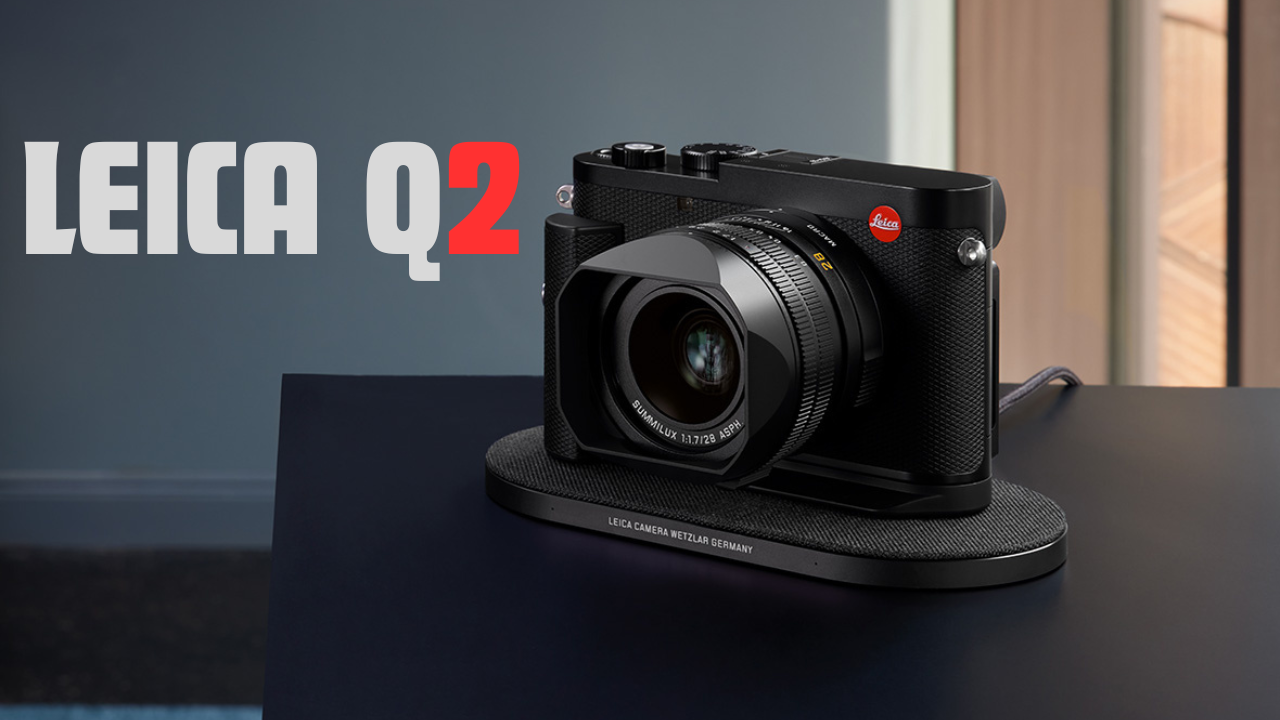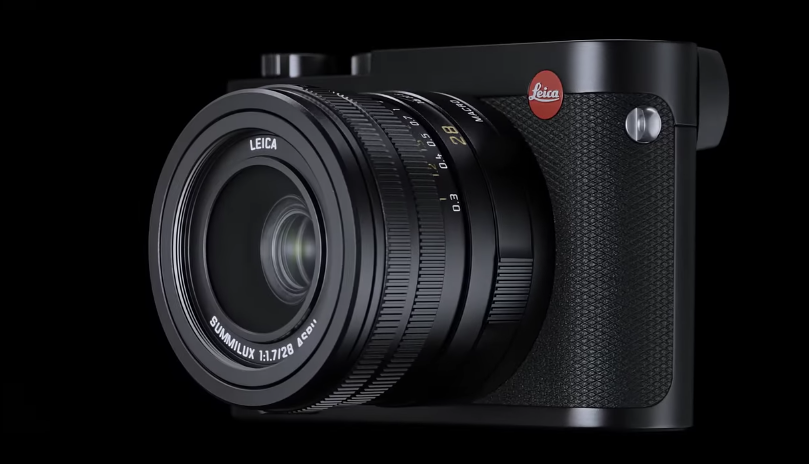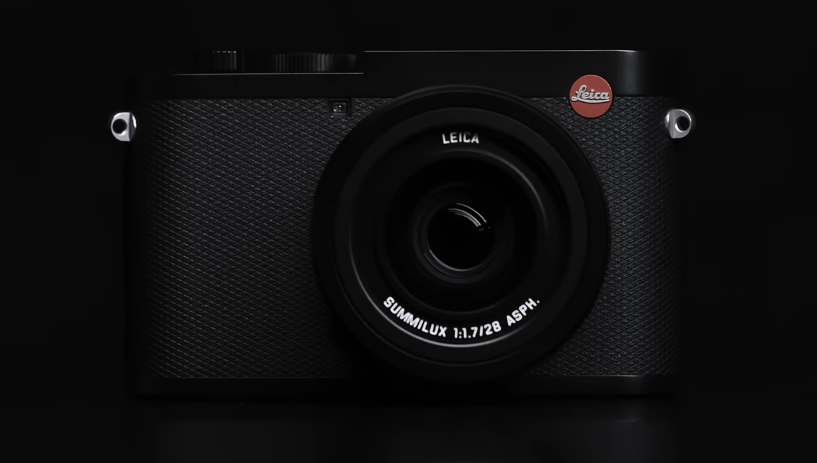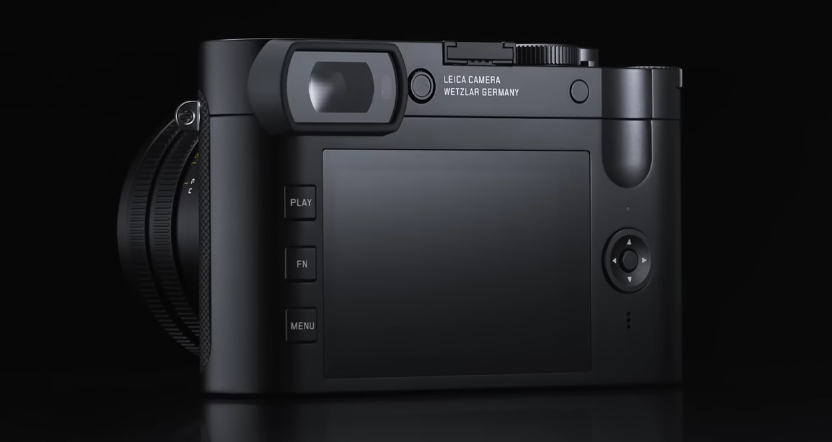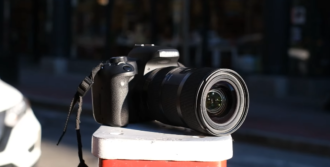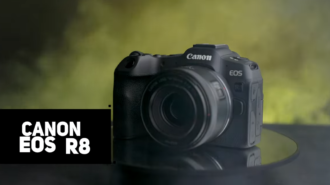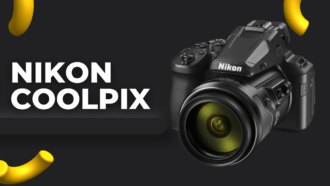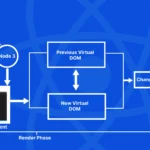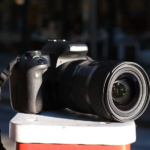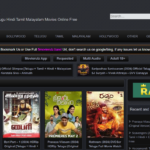Leica Q2: The Ultimate Fixed-Lens Full-Frame Camera
- 1 Key Specifications Of Leica Q2
- 1.1 What’s in the Box?
- 1.2 Camera Design and Build
- 1.3 Exploring the Sensor and Lens
- 1.4 Advanced Autofocus and Manual Focus
- 1.5 Low-Light Performance
- 1.6 Controls and User-Friendly Interface
- 1.7 Connectivity and Sharing Options
- 1.8 Addressing Concerns and Limitations
- 1.9 Future Possibilities
- 1.10 Pros and Cons of Leica Q2
- 2 Should I Buy It?
In Short:
- The Leica Q2 exudes refined build quality with a solid magnesium body and inviting leatherette finish. Its newly developed 28mm f/1.7 Summilux lens delivers outstanding sharpness from edge to edge, while 4.5 stops of optical stabilization allow handheld shooting in very low light.
- At the heart of the Q2 lies an all-new 47MP CMOS sensor, a huge jump up from 24MP on the older Q. Paired with Leica’s latest Maestro II image processor, it achieves expanded dynamic range with finer detail and noise handling up through ISO 50,000.
- Photographers can concentrate on creative framing and exposure, relying on Q2’s capable new autofocus system with face and eye detection for both people and wildlife subjects. Intuitive touch functions supplement the classic analog-style shutter speed and aperture dials.
- Built-in Wi-Fi and Bluetooth make wireless control of the Q2 fluid when paired with Leica’s FOTOS app. Remote shooting control plus image transfer and GPS tagging aid photography workflows, even if USB 3 or HDMI ports are conspicuously missing for physical connectivity.
The Leica Q2 is an advanced fixed-lens full-frame digital camera that represents the pinnacle of Leica’s compact camera lineup. Released in 2019 as the successor to 2015’s popular Leica Q, the Q2 brings a host of meaningful upgrades like a new 47.3MP sensor, an improved processor, a higher-resolution electronic viewfinder, and weather sealing while retaining the classic Leica look and intuitive handling. It couples outstanding imaging capabilities with sophisticated yet accessible handling, making it arguably the best fixed-lens full-frame camera available.
Key Specifications Of Leica Q2
| Feature | Specification |
| Sensor | 47.3MP full-frame |
| Lens | 28mm F1.7 Summilux stabilized lens |
| Viewfinder | 3.68MP OLED EVF with 0.76x magnification |
| ISO Range | Native ISO range of 50-50,000 |
| Video Capture | 4K video capture (24/30p), 1080/120p |
| Shutter Speeds | Leaf shutter up to 1/2000 sec, E-shutter up to 1/40,000 sec |
| Weather Resistance | IP52-rated dust and water-resistant |
| Body Material | Magnesium-alloy body |
| Connectivity | Wi-Fi and Bluetooth |
| Battery Life | Improved battery life |
| Additional Features | Digital frame selector, weather-sealing, improved EVF |
| Price | $4995 / £4250 / €4790 |
What’s in the Box?
The Leica Q2 retail package includes:
- Leica Q2 digital camera body
- Battery BP-SCL4
- Battery charger
- Carrying strap
- Body cap
- Accessory shoe cover
Camera Design and Build
The Q2 retains the basic rangefinder-style body of its predecessor, with some minor external changes. The body is still carved from a solid block of magnesium alloy for durability but is now sealed against dust and moisture to IP52 standards. Dedicated buttons have been streamlined, with playback, menu, and Fn buttons being the only ones on the back. This straightforward control layout complements the intuitive touchscreen interface. At 718g, the Q2 remains portable for a full-frame camera while feeling solid and stable in hand. The textured leatherette wrap is both handsome and practical. The integrated lens does not extend externally, making the Q2 pocketable in a large coat.
Exploring the Sensor and Lens
The Q2 is built around an all-new 47.3MP CMOS sensor, a significant boost from the 24MP sensor in the original Q. Coupled with the Leica Summilux 28mm f/1.7 ASPH lens. This sensor allows photographers to capture an extremely high level of detail. The 28mm lens gives a flexible wide-angle field of view that is well-suited for landscapes, architecture, interiors, and environmental portraits. With a bright maximum aperture of f/1.7, the Q2 lens also provides ample light-gathering power for handheld shooting in low light. Optical stabilization offers up to 4.5 stops of shake reduction. Thanks to a newly added digital frame selector mode, photographers can virtually change the Q2’s lens to simulate working with 35mm, 50mm or 75mm focal lengths. Raw files maintain the full field of view, giving added flexibility in post-processing cropping.
Advanced Autofocus and Manual Focus
Autofocus sees major upgrades in the Q2. Contrast-detect AF lock-on is approximately 40% faster than the previous model when working with moving subjects. Continuous AF performance is improved in stills and video. Face detection is also more advanced and detects faces with greater reliability than before. For manual focus, the Q2 implements a focus ring with pleasantly damped movement. Focus peaking, and image magnification provide focus aids, allowing you to fine-tune your point of sharpness quickly and accurately.
Low-Light Performance
With a sensitivity span of ISO 50-50,000, low light and night shooting present no problem for the Q2. Noise reduction processing is lighter than average for most camera brands, retaining detail and texture up to relatively high ISO levels at the cost of slightly increased visible noise at 100% viewing. Yet noise remains pleasingly film-like. A perfectly silent electronic shutter enables completely stealthy shooting at up to 1/40,000s shutter speeds, while the fast lens and sensor readout contribute to low rolling shutter distortion. This lets you shoot in extremely dim light levels while avoiding camera shake or blur.
Controls and User-Friendly Interface
Operationally, the Q2 blends analog dials for key shooting parameters with LCD touch functions. Three programmable custom buttons give quick access to your most-used settings. The streamlined menu system makes changing secondary settings quick and painless. Updated over previous Leica touch interfaces, the Q2 offers responsive and intuitive control via the LCD. All key settings are accessible via the touchscreen, and touch-to-focus works quickly. Pinch-to-zoom buttons make image review seamless as well.
Connectivity and Sharing Options
Built-in Wi-Fi and Bluetooth facilitate wireless connection of the Q2 to smartphones and tablets running the Leica FOTOS app (available for iOS and Android). Smooth remote camera control, image transfer, and GPS tagging of images are all possible through the app. Unfortunately, the Q2 omits any physical connectivity options like USB ports or HDMI, limiting your wired-in choices. This may present difficulties reviewing images on a larger screen is important in your workflow.
Addressing Concerns and Limitations
Some photographers balk at the unorthodox lens corrections used to maximize image quality from the 28mm Summilux lens. However, comparing real-world results with and without correction reveals little difference in the actual detail captured. Vignetting and distortion control prove highly effective in Q2. More vexing may be the Q2’s lack of any USB data ports for tethered shooting or convenient image transfer. As a luxury compact camera aimed primarily at personal rather than professional use, the exclusion of USB is an understandable decision to streamline the interface. Wireless connectivity mitigates this to an extent.
Future Possibilities
Given the 4-year gap between releases and relatively minimal external changes, Leica may support the Q line with additional accessory and firmware releases rather than whole new models.
That said, we could potentially see a Q3 variant gain features like:
- USB C port for tethered shooting
- Professional 4K/60p video capabilities
- Future sensor and processor upgrades
Note: With a higher price and more limited distribution than brands like Sony and Canon, the Q series aims firmly towards committed Leica shooters. Yet, for photographers seeking outstanding full-frame image quality in a slender, fixed lens body, the Q2 makes a compelling case.
Pros and Cons of Leica Q2
| Pros | Cons |
| Superb image quality | Very expensive |
| Excellent lens sharpness | No USB ports |
| Effective image stabilization | JPEG colors can look flat |
| Intuitive control layout | Continuous AF prone to hunting |
| Solid weather sealing | 4K video lacks advanced control |
| Beautiful build quality |
Should I Buy It?
With a body-only cost of nearly $5,000, the Q2 commands a luxury price tag. Yet given Leica’s brand cachet and manufacturing quality, most buyers will conclude they get strong value for money if it fits their needs.
For photographers wanting to travel light without sacrificing quality, the Q2 makes a lot of sense as an all-in-one camera solution. Street, documentary, landscape, architecture, and travel specialists stand to gain the most from exploring with this camera. Portrait and event shooters may still want to opt for an interchangeable lens model instead.
In the final analysis, those able to afford the Q2 will discover the joy in having a camera crafted to such fine tolerances, with some of Leica’s latest imaging tech enclosed in a compact body. It makes the experience of photography both visceral and technically satisfying.
FAQs
Does the Leica Q2 lens have image corrections applied?
Yes. Some digital corrections are applied to lens distortion and vignetting characteristics to maximize sharpness across the frame. However, real-world tests show this does not noticeably impact the details captured.
How does the EVF compare to the previous model?
The Q2’s 3.68MP OLED EVF provides 70% higher resolution than the Q’s display along with better clarity, less false color, and reduced lag. It offers a large 0.76x magnification to immerse viewers.
What memory cards work with the Q2?
The Q2 has one UHS-II-compliant SD card slot. UHS-II cards provide maximum read/write speeds, but UHS-I cards still work reliably as well. Cards of 32GB or higher capacity are recommended for extended shooting of DNG raw files and 4K video.
Does the camera have image stabilization?
Yes. The 28mm Summilux lens incorporates optical stabilization effective for about 4.5 stops of shake reduction, letting you shoot handheld at much slower shutter speeds while maintaining sharpness. Tripod use is still recommended for long exposures.
Can I charge the camera via USB?
Unfortunately no. Unlike most mirrorless cameras today, the Q2 excludes any form of USB port. You must use the dedicated BC-SCL4 battery charger, with the BP-SCL4 lithium-ion battery lasting about 350 shots per charge.

